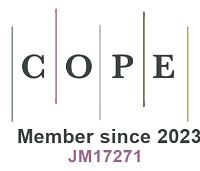Water Emerging Contaminants & Nanoplastics is an international peer-reviewed, open access journal.
Aims and Scope
Water Emerging Contaminants & Nanoplastics is an open-access international journal intended to publish peer-reviewed, original research on pollutants of emerging concern in both the natural and anthropogenic water cycles and their effects on the ecosystems (aquatic and terrestrial environments, atmospheric environment, etc.) and human health. The journal publishes research articles, reviews, systematic reviews, short communications, commentaries, editorials, letters to the Editor and perspectives.
Subject areas of specific interest include, but are not limited to:
- Studies of any aspect related to the occurrence, partition, transport, fate, and effects of the different families of emerging contaminants, such as pharmaceuticals, personal-care products, UV-filters, pesticides, flame retardants, perfluorinated compounds and other industrial chemicals, disinfection by-products, persistent organic pollutants, endocrine disruptors, as well as, their metabolites and environmental transformation products.
- Novel analytical methods, including new data treatment approaches (chemometric studies), suspect and non-target screening methods.
- Novel sampling methods (use of passive sampling devices etc.).
- New emerging contaminants.
- Modeling studies on the occurrence, partition, transport, and fate of emerging contaminants in the aquatic environment (surface and groundwater), including the different involved phases and their validation using field data.
- Studies about microplastics/nanoplastics, and other related contaminants (nanomaterials, nanocomposites). These include, among others, the preparation of sample protocols, analytical determinations in different environmental compartments /matrixes, transport, fate, toxicity, and effects on the ecosystems (aquatic and terrestrial environments, atmospheric environment, etc.) and human health.
- Studies (field, mesocosm, microcosm) combine the occurrence and effects of emerging contaminants with other disciplines such as biology, ecology, genomics, hydrology, hydromorphology, etc.
- Studies related to the joint effects of water pollution by emerging contaminants and other environmental stressors on the receiving ecosystems.
- Studies related to the combined effects of water pollution by emerging contaminants and global change (climate change, hydrologic alteration, and land-use changes).
- Risk assessment studies of emerging contaminants related to both human health and the ecosystem.
- Studies on contaminant (bio)monitoring and their environmental effects, such as the generation of resistance (antibiotic resistance genes, etc.), potential spread of pathogens and alterations on microbial diversity.
- Metabolomic studies related to the response of aquatic living organisms to exposure to emerging contaminants and/or microplastics/nanoplastics.
- Studies of environmental proteomics and transcriptomics.
- “One Health” approaches. Epidemiological studies on the effects of chemicals on human and ecosystem health.
- Studies of advanced treatment methods used along the anthropogenic water cycle (i.e., drinking and wastewater treatment) for the elimination of emerging contaminants.
- Studies related to new regulatory and policy aspects of broad concern related to the occurrence and effects of pollution by emerging contaminants and their mixtures in the water environment.
Ownership
The journal is owned by OAE Publishing Inc.
Publishing Model
Gold open access. All articles published by Water Emerging Contaminants & Nanoplastics are made freely and permanently accessible online immediately from the date of publication. For further information, please refer to Open Access.
Journal Information and Statistics
- Publication model: Gold Open access
- ISSN 2831-2597 (Online)
- Frequency: Quarterly
Copyright and License to Publish
Articles in Water Emerging Contaminants & Nanoplastics are published under a Creative Commons Attribution 4.0 International (CC BY 4.0). The CC BY 4.0 allows for maximum dissemination and re-use of open access materials and is preferred by many research funding bodies. Under this license users are free to share (copy, distribute and transmit) and remix (adapt) the contribution for any purposes, even commercially, provided that the users appropriately acknowledge the original authors and the source.
Copyright is retained by authors. Authors are required to sign a License to Publish (which can be downloaded from the journal's Author Instructions), granting Water Emerging Contaminants & Nanoplastics, which identifies itself as the original publisher, exclusive rights to publish their articles, and granting any third party the right to use the articles freely as long as the integrity is maintained and the original authors, citation details and publisher are identified.
Editorial Board
For more information about the editorial team, please refer to Editorial Board.
Editorial Policies
All manuscripts submitted to Water Emerging Contaminants & Nanoplastics should adhere to Water Emerging Contaminants & Nanoplastics' Editorial Policies.
Peer Review
The journal adheres to rigorous peer review and undergoes single-blind peer review. For more details, please refer to Editorial Process and Peer Review Guidelines.
Indexing & Archiving
All articles published in WECN are included in:Contact
Please visit Contact Us for details about different queries.







